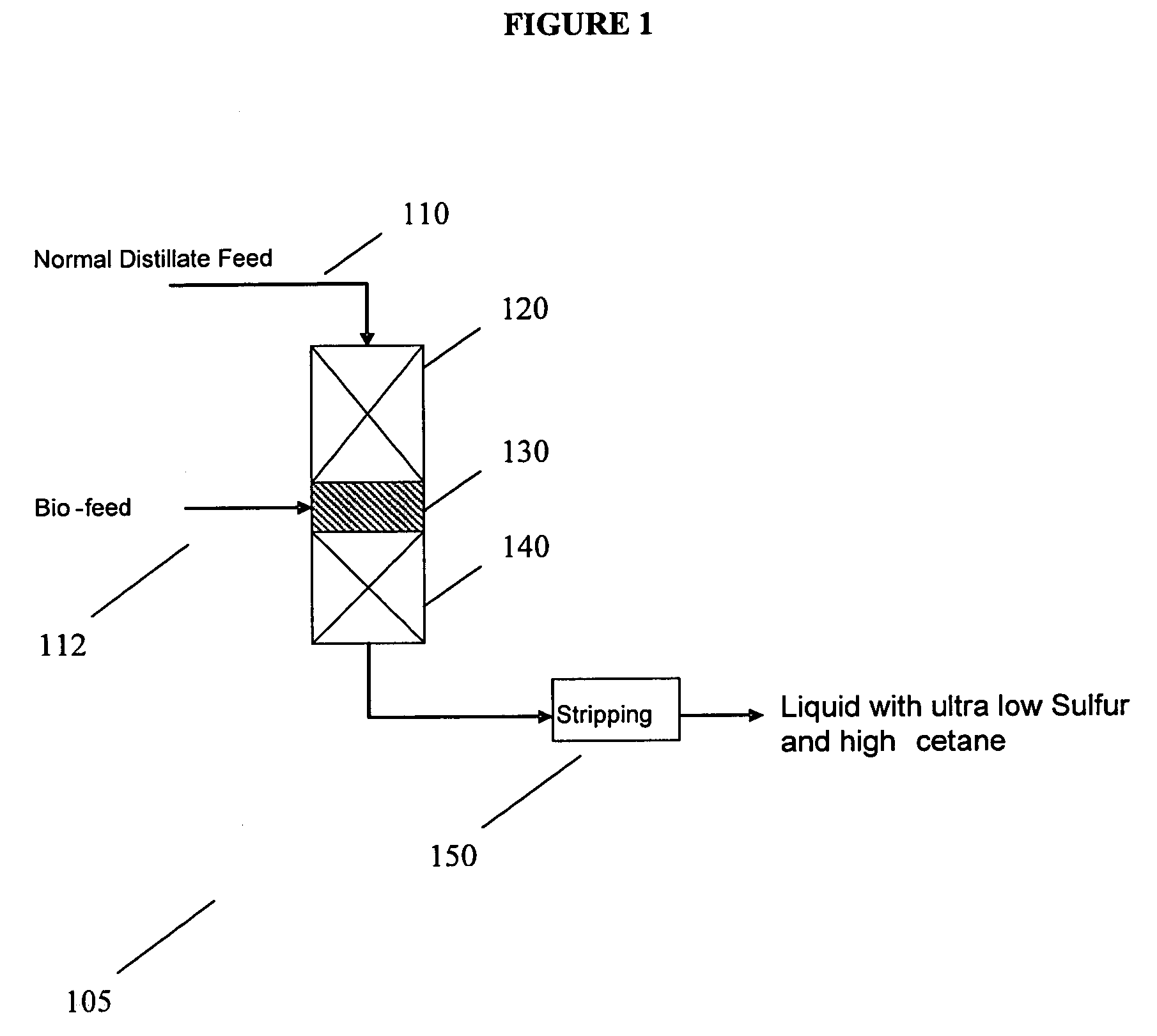Staged co-processing of biofeeds for manufacture of diesel range hydrocarbons
a biofeed and hydrocarbon technology, applied in the field of diesel hydrocarbons production processes, can solve the problems of low oxidation stability poor cold flow properties of fatty acid alkyl esters, and direct use of diesel fuels
- Summary
- Abstract
- Description
- Claims
- Application Information
AI Technical Summary
Benefits of technology
Problems solved by technology
Method used
Image
Examples
Embodiment Construction
[0016]This invention provides processes for producing diesel fuels that include up to 20% by weight of a biocomponent feedstock and also have sulfur levels of 10 ppm or less. This combination of properties is achieved by several differing embodiments, with each embodiment having its own advantages for achieving the desired goals.
[0017]In one embodiment, the goals of the invention are achieved by staging the introduction of the mineral hydrocarbon feedstock and the biocomponent feedstock into a single reactor having multiple reaction zones. In such an embodiment, the first reaction zone is operated under hydrodesulfurization conditions to reduce the sulfur level of the treated mineral hydrocarbon feedstock to about 50 ppm or less. Preferably, the sulfur content of the treated mineral hydrocarbon feedstock is greater than 10 ppm by weight. Preferably, the nitrogen content of the treated mineral hydrocarbon feedstock is also reduced. The biocomponent feedstock is then added to the trea...
PUM
 Login to View More
Login to View More Abstract
Description
Claims
Application Information
 Login to View More
Login to View More - R&D
- Intellectual Property
- Life Sciences
- Materials
- Tech Scout
- Unparalleled Data Quality
- Higher Quality Content
- 60% Fewer Hallucinations
Browse by: Latest US Patents, China's latest patents, Technical Efficacy Thesaurus, Application Domain, Technology Topic, Popular Technical Reports.
© 2025 PatSnap. All rights reserved.Legal|Privacy policy|Modern Slavery Act Transparency Statement|Sitemap|About US| Contact US: help@patsnap.com



